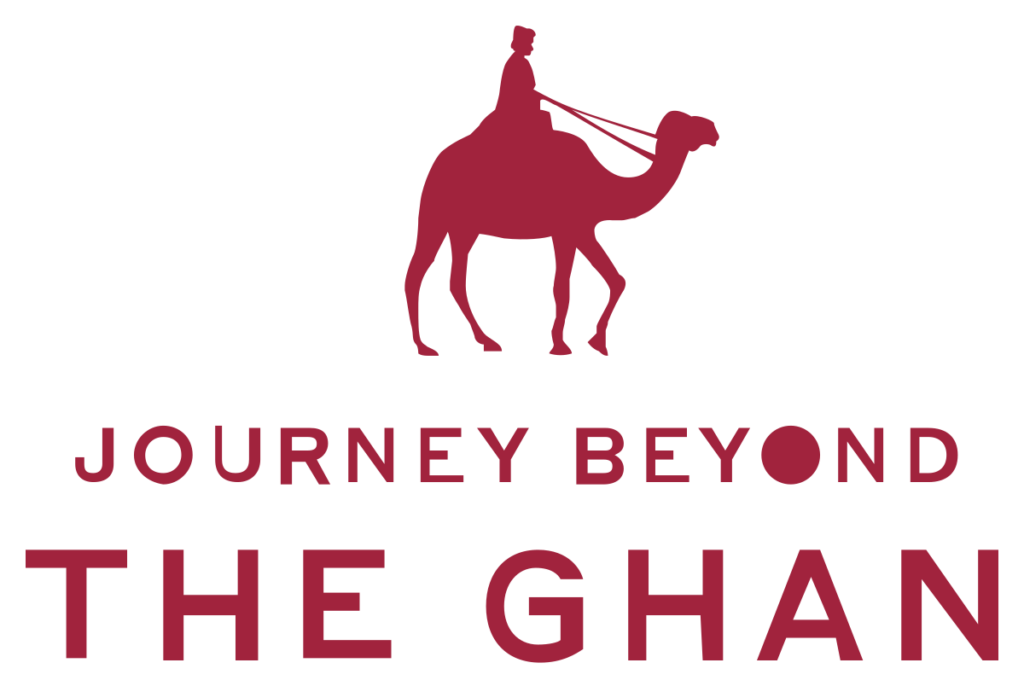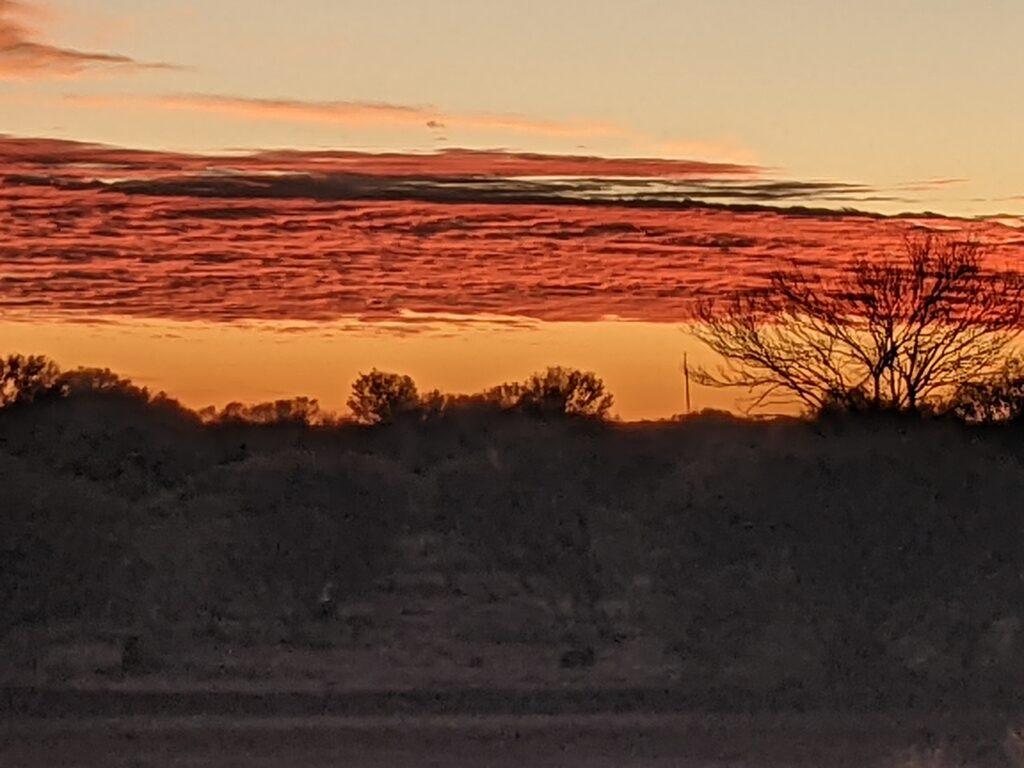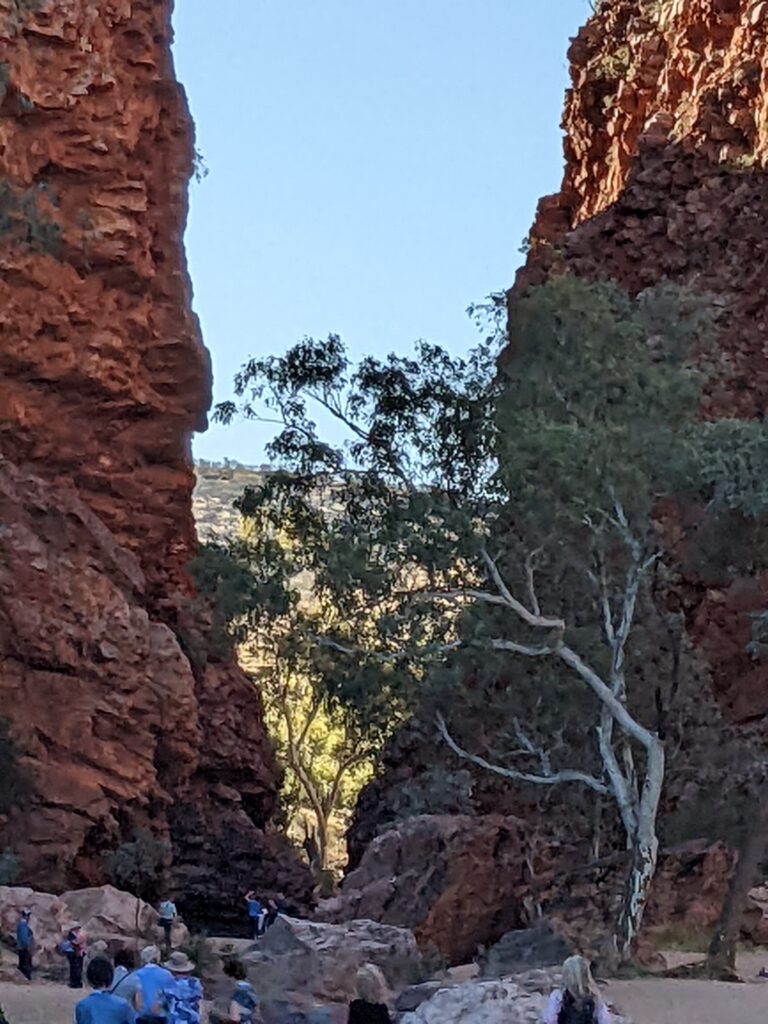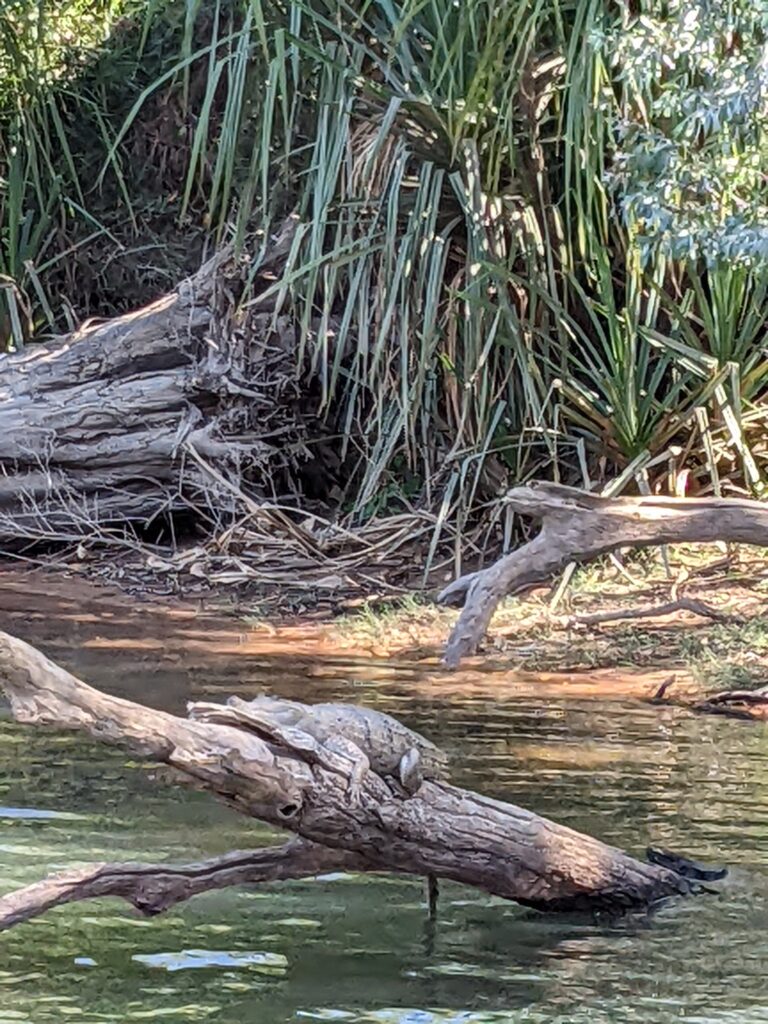“Welcome to the Ghan. Here is your carriage and cabin number. We’ll be boarding in an hour and a half. Coffee and tea are available while you wait, and we will be opening the champagne shortly.”
At 11 am, champagne, really? Well, why not? After all, we are about to embark on a new adventure. And as the rain settles in for the long haul across the Adelaide plains, we should be celebrating our imminent departure for sunnier climes.
Back in my university days, a trip on the Ghan was an overnight, sit-up experience, and the line stopped in Alice Springs. In 2004, the line was finally opened all the way through to Darwin, after more than 120 years of planning, and now stretches almost three thousand kilometres from Adelaide to the Top End. Since then, the Ghan has been our own Australian version of the Orient Express, minus the murders of course, and something I have been longing to do for years. So, when the One & Only’s very adventurous aunt (Zia) happened to mention last year that she would love to do the trip, I jumped at the chance to go with her.
The Ghan first set out from Adelaide Railway Station to Alice Springs in 1929, carrying passengers, livestock and other supplies. Before the extension of the railway to Alice Springs was completed, the final leg of the journey was made by camel.
In the Adelaide Observer in 1924, one writer describes his trip on the Ghan:
The Oodnadatta train comes in, named in ribald fashion, “The Afghan Express” and to justify this, an old chap, swarthy, and dressed in turban, jacket, and voluminous blue print trousers tucked into his boots, buys a ticket, and climbs upon the train further along, in the lamplight.
Almost a decade later, in the Melbourne Herald, Archer Russell wrote:
Of my companions-to-be, only two were white— a Far Inland storekeeper and a “boss” cattleman; of the remainder, seven in number, three were aboriginal stock[men], and four inscrutably aloof at the further end of the car, were Afghan camel drivers… the cameleers would rejoin their camel trains at Oodnadatta, and disappear into the inland. The cattleman [explained]: “Yers, them there baggy trousers is why we call this ‘ere train the Afghan Express. Every trip, some of ‘ems on it.”
Thus, the Afghan Express (later shortened in the Aussie manner of abbreviating everything, to “The Ghan”) earned its nickname because of those Afghan camel drivers who helped the British settlers find a way into the interior. The ‘express’ part must have been tongue in cheek, though, as it was renowned for being one of the slowest, most unreliable services, and the tracks were often washed away. As Russell said, “the Afghan Express was no Flying Scotsman!” An extra carriage, or flat car, would carry spare sleepers and railway tools, so the crew could repair the line when necessary. Later, during World War II, the Ghan was used to transport troops. Presumably, the hundreds of troop trains that travelled up the line through the war years were a little more reliable!
Originally a government owned steam train, the Ghan upgraded to a locomotive in 1951. Privatised in 1997, the line was finally extended from Alice Springs to Darwin. The first passenger train reached the Top End in February 2004 and began a flow of tourists that has seen tourism infrastructure grow exponentially in the Northern Territory. The new Ghan – purely a tourist train these days, run by Journey Beyond Rail Expeditions – travels weekly from Adelaide to Darwin over three days, and back over four, stopping at Marla, Alice Springs and Katherine en route. JBRE offers several railway adventures across the Australian Outback: the journey through central Australia from north to south on The Ghan; east to west from Sydney to Perth via Adelaide on the Indian Pacific; The Overland from Adelaide to Melbourne, and – the latest addition in 2019 – Adelaide to Brisbane on the Great Southern Railway.
Our trip on the Ghan promised 3 days/ 2 nights of all-inclusive meals, drinks and off-train excursions. The meals, the marvellous staff and those off-train experiences were all fabulous, and I have a plethora of photographs of sunsets and sunrises that barely do justice to the ‘majestical’ colours they create in the desert skies.
There was an unexpected Old World charm to the experience, despite the fact that we were all dressed casually – no tiaras or dinner jackets on this Antipodean version of the Orient Express! But we soon got to know our fellow travellers, comparing notes over dinner on travel plans and other memorable trips we had taken, laughing uproariously over endless glasses of sparkling wine, gasping over breath-taking views through the wide lounge windows. The Gold Class cabins are not large by any stretch of the imagination, but in true IKEA fashion there is everything you need, neatly packaged, for our three day stay. Staff put the beds down every night, and pack them away again in the morning. We learn how to juggle ourselves and our belongings in this dinky space, but spend most of our time aboard the train in the lounge, unless we are sleeping.. And the moving train rocks us to sleep each night.
At dawn, on our second day out, we clamber out of the train to watch the sun rise over the desert at a siding in the middle of nowhere. The staff have already built huge fires and set up tea and coffee stations. In the chilly morning air, we huddle as close to the fire as possible, watching a deep orange stripe appear on the horizon that gradually spread over an ocean of ochre earth and dusty scrub, turning the sky from black to steel grey to a soft blue, as we clutch hot mugs of tea or coffee in one hand and try to take photos with the other.
Later that day, we disembark at Alice Springs for the afternoon’s excursion. Some take a bus tour of town, some head off to the Desert Park. I need to stretch my legs, so I board a coach for Simpson’s Gap, and a little gentle hiking. Our guide introduces us to native species along the way and I have a flashback to a bygone era when we camped here beneath the stars, to be startled into wakefulness by magpies sounding the alarm above our heads.
We reboard the train as the sun sets over Alice and are heading north again by dinner time.
Day three, and the train pulls into Katherine after breakfast. A cluster of coaches wait to transfer us to Katherine Gorge, named by the Scottish explorer, John McDouall Stuart, for the daughter of South Australian horse dealer and pastoralist James Chambers. These days it is known by the name it was given by its aboriginal custodians, the local Jawoyn people: Nitmiluk. Flat bottomed boats navigate up the gorge till they can go no further. These rocks that block our way are thirty feet under water in the wet season. For now, we walk across them to the next section of the gorge, where a second boat takes us on past the Jedda Rock – from the 1955 Chauvel film starring aboriginal actors Rosalie (Ngarla) Kunoth as Jedda and Robert Tudawali as Marbuck.
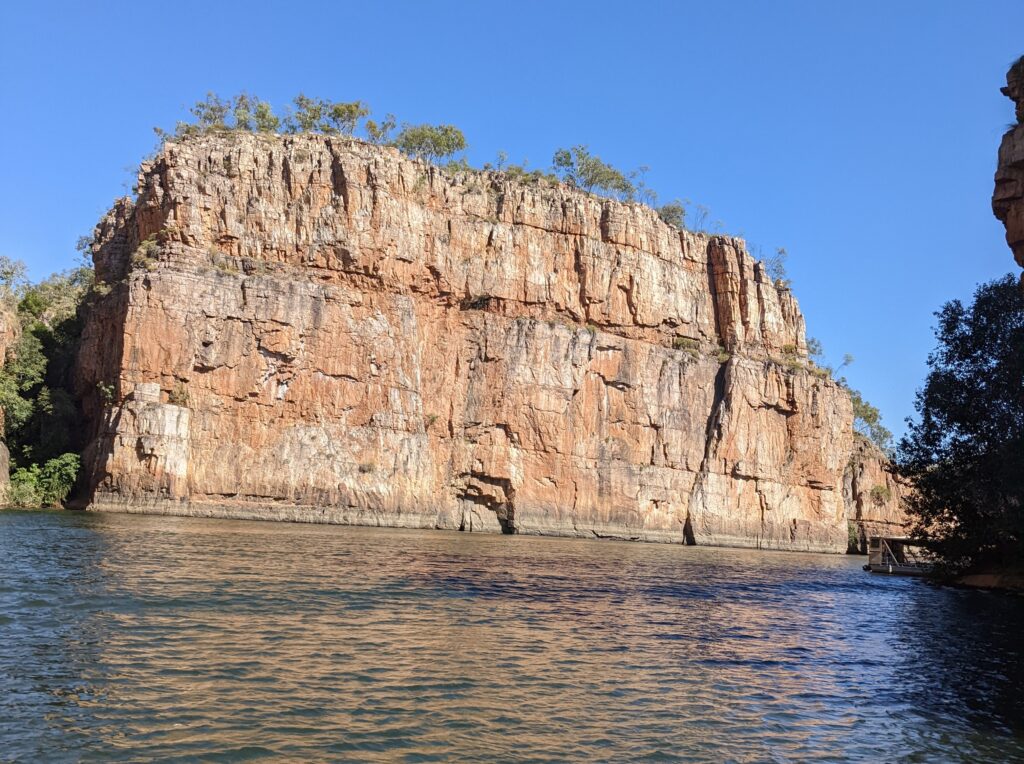
During the wet season, the huge saltwater crocodiles can swim upriver and get trapped in the gorge when the water level drops, but today, we only come across the long nosed freshwater variety which don’t look nearly as menacing and apparently have little taste for human flesh. Nonetheless, I am not tempted to jump in the water to introduce myself.
Lunch is served on the banks of the river under a shade cloth, and we drift through the early afternoon, sipping lukewarm wine, nibbling on crocodile served like pulled pork, barramundi ceviche, and kangaroo. Then it’s back to the Ghan for the final lap to Darwin, a last glass of bubbly with new friends, a last supper in the elegant dining car, and a fond farewell to our friendly concierge, the chefs and waitresses who have looked after us so beautifully. The whole trip has been a luxury and a delight from start to finish. Now, which train journey next?
* With thanks to Google images for the aerial view of the train.


